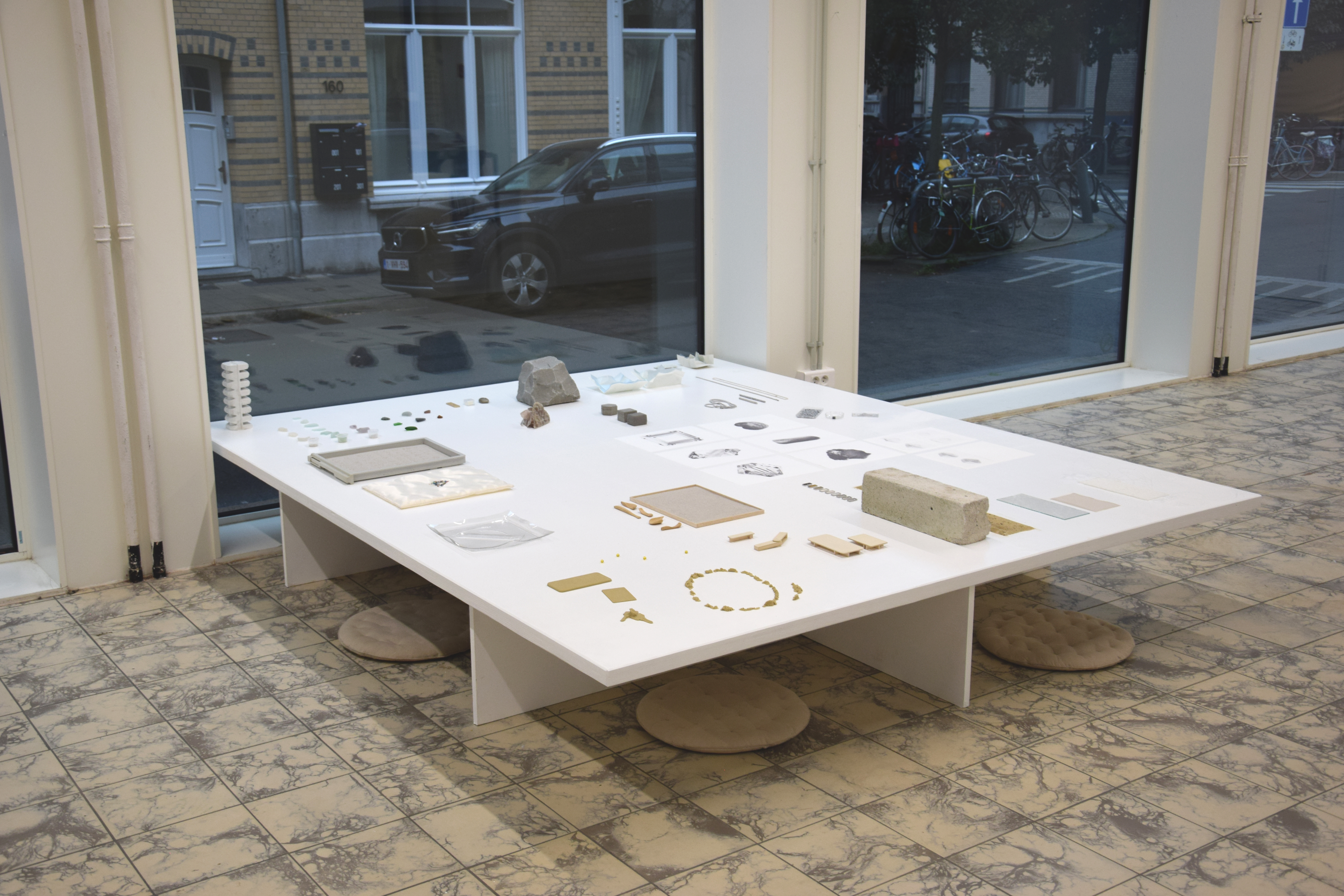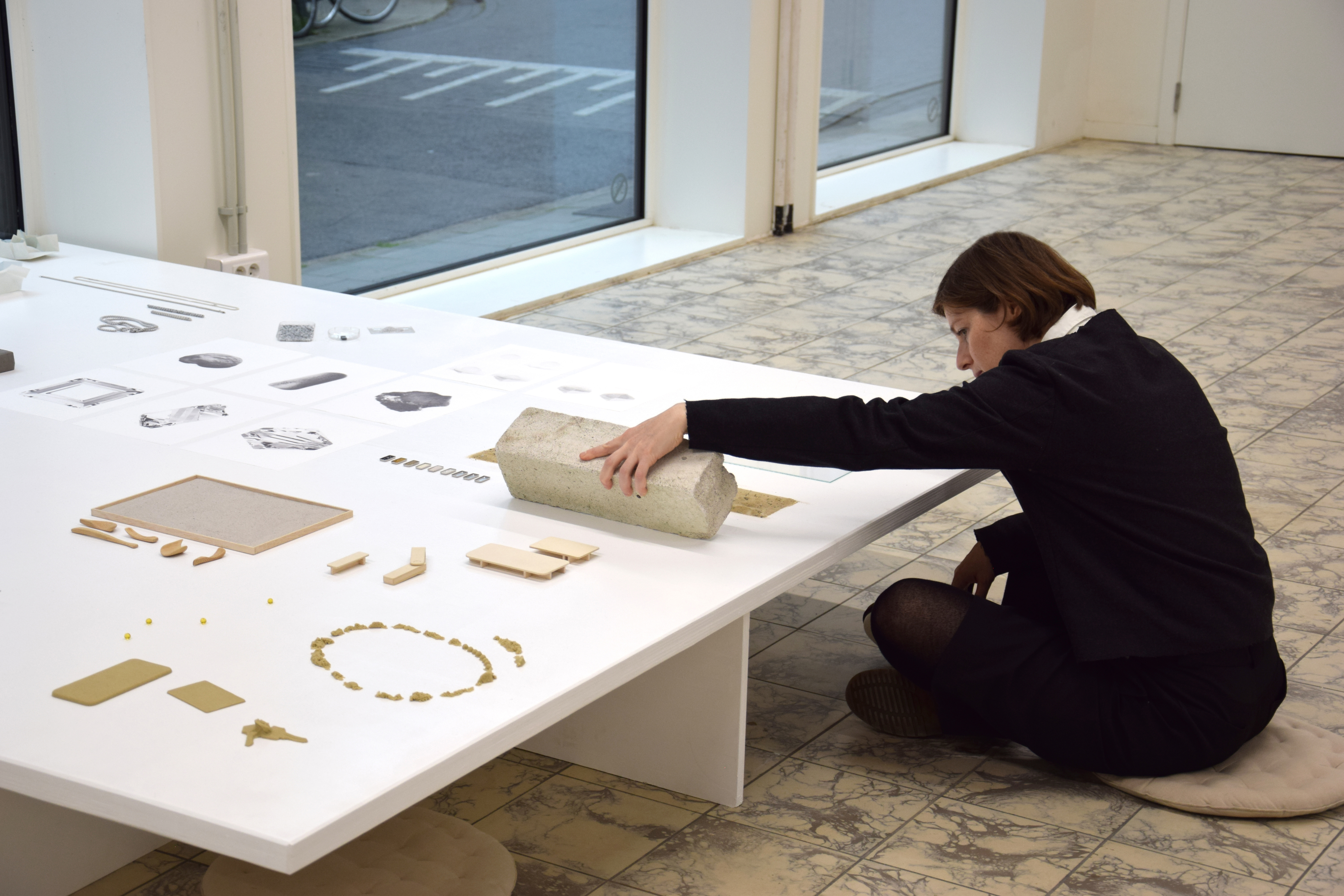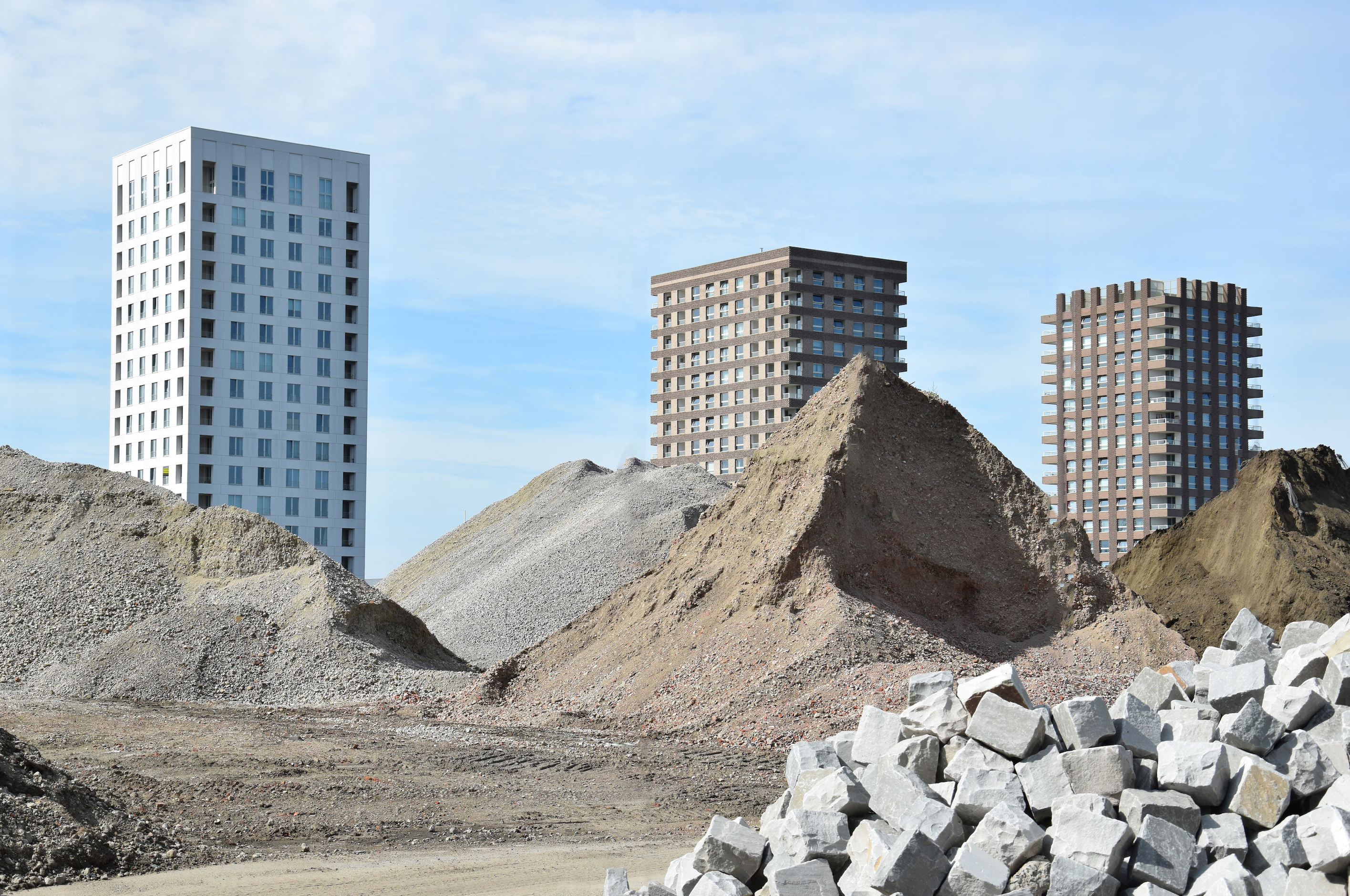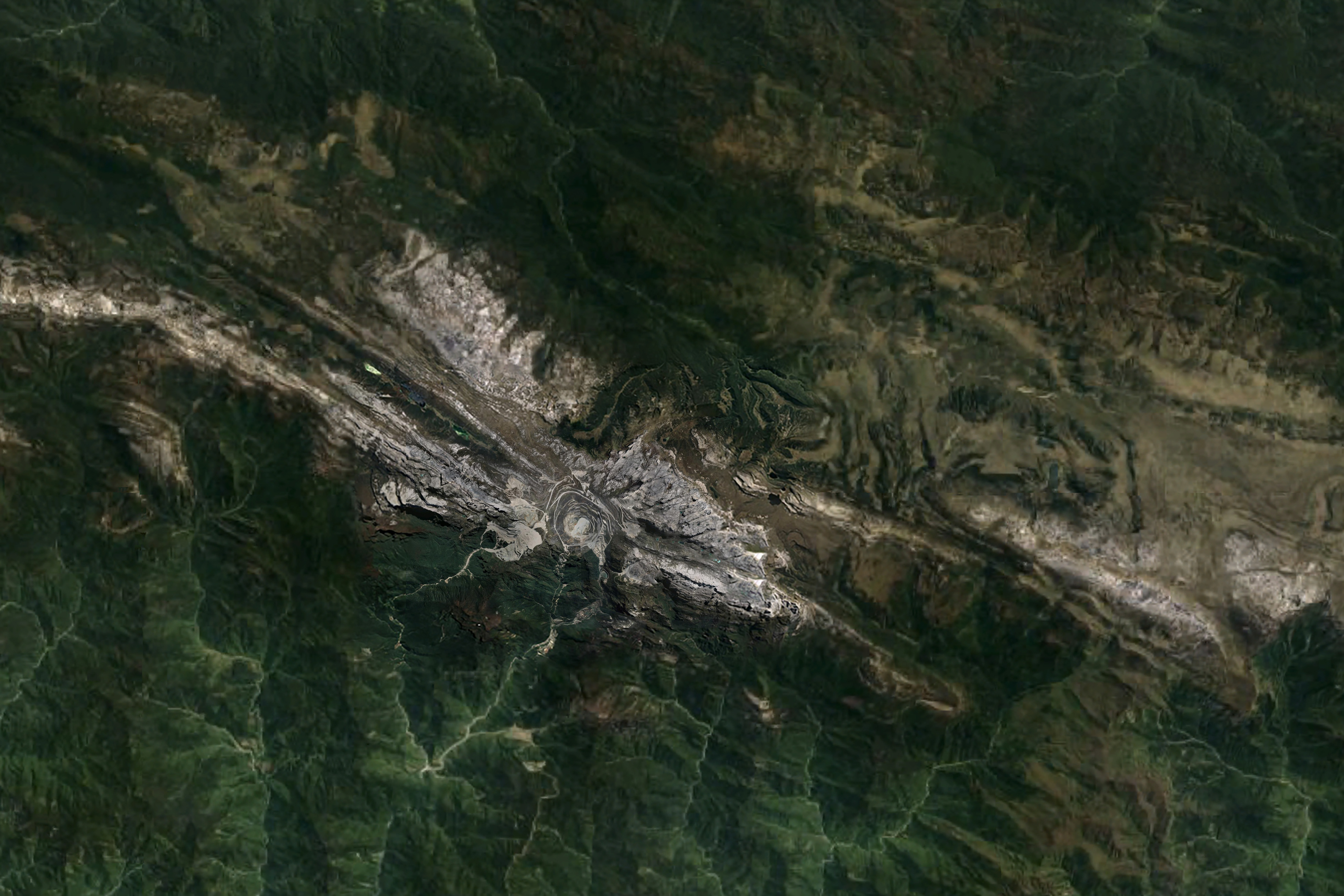Research projects 2019 - 2023

JEWELLERY, MATTER, TIME 13 October 2022Our presentation during the research week gives an insight into the research process on sand.
On Sand - Jewellery Matter Time: Hard Data, Soft Stories
Our presentation during the research week gives an insight into the research process on sand.
Creating an environment on how we work, this installation is made up of different components: text, readings, material samples, experiments and objects.
Sand is a granular material composed of finely divided rock and mineral particles consisting of loose grains between 2 and 0.0625 millimeters. It is a seemingly abundant resource which is mined worldwide and processed into structural materials such as concrete, glass and silicones which are used in microelectronics and as components in the food and pharmaceutical industries. After air and water, sand is the most utilized natural resource on earth. It is present in every structure, road, window, and screen we use daily. As abundant as it seems, it is predicted to become scarce due to overconsumption by industrial use. The ecological and economic consequences of overmining often result in illegal activities and local geographic conflicts.
As researchers in the artistic field, we chose to work with sand - for its apparent finitude and therefore preciousness - and develop processes and objects that zoom into these qualities.
What if sand is in fact an extremely valuable material?
How would a jeweller then work with it?
Why would their tools and choices be relevant?







JEWELLERY, MATTER, TIME 01 September 2022How does the production of jewellery, tied to the ownership of land, materials and data, contribute to the Anthropocene, environmental exploitation and climate emergency?
Jewellery Matter Time: Hard Data, Soft Stories
How does the production of jewellery, tied to the ownership of land, materials and data, contribute to the Anthropocene, environmental exploitation and climate emergency?
Jewellery, Matter, Time: Hard Data, Soft Stories focuses on the impact of different genres of jewellery production on the environment. As a result of globalised capitalism of materials, it has become harder to trace how materials are sourced, processed, and how communities and the environment pay costs for commodified materials made available for global markets. In the context of the Anthropocene, overconsumption and overproduction asks us – artists and designers – to situate our jewellery practices within the undefined relationships between material flows and their data, land of production and ownership. In this research hard data is defined as facts, soft stories are defined as meaningful connections between these facts, crafted into object stories through the artistic practices of Saskia Van der Gucht and Irma Földényi.
Jewellery, as a critical medium, becomes a tool to think with. If jewellery can tell stories, which stories can they tell about their impact in the age of the Anthropocene?
Image: Fieldwork for sand probes at Kattendijkdok-Oostkaai, september 2022 - Saskia Van der Gucht

JEWELLERY, MATTER, TIME 01 September 2020In our current project Saskia Van der Gucht and Irma Földényi are building on the research of ‘Jewellery, Matter, Time – Materials in the Anthropocene’ by Irma Földényi and Liesbet Bussche, which investigated how precious materials are becoming extinct as a result of human activities on earth. There we have developed a visual essay on how artificial diamonds are becoming a new form of natural stone and concluded that growth time is speeded up, materials have no rights, jewellers are not part enough of public debates on material issues and the industry is not fully transparent on the true costs – among others.